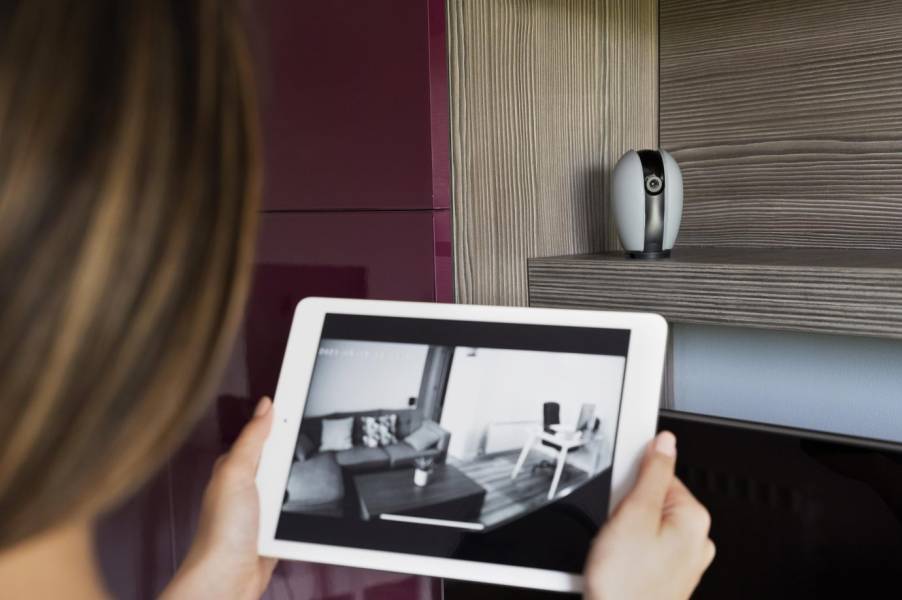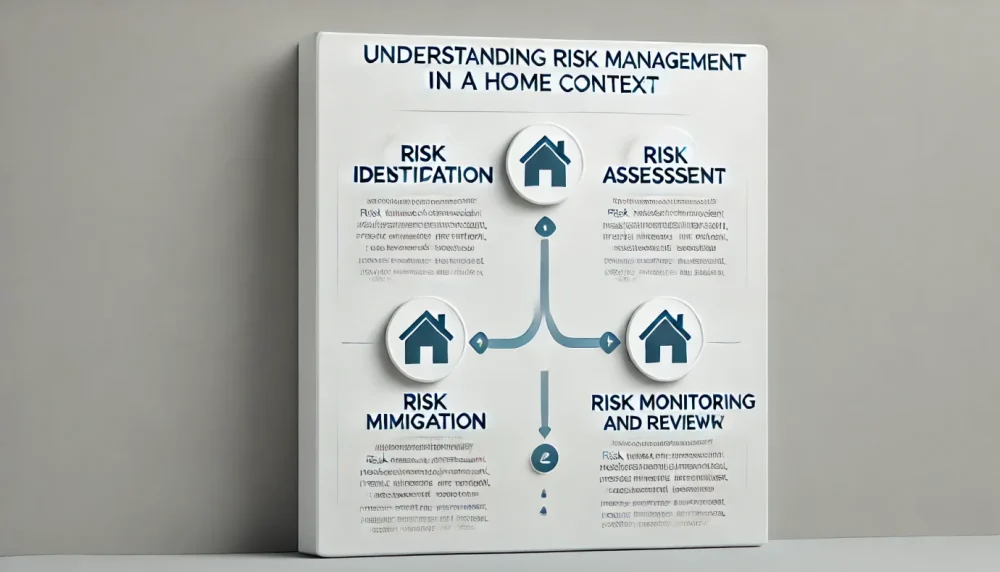Is your home truly secure? With burglaries occurring every 25.7 seconds in the US alone, protecting homes is no longer optional—it’s essential. Discover how a smart security system not only deters crime but also serves as a strategic risk management tool, safeguarding your finances, property, and loved ones. Stay ahead of evolving threats—learn more now!

A security system for a home is a structured approach to risk management, designed to mitigate potential threats such as burglary, vandalism, and unauthorised access. Risk management involves identifying, assessing, and responding to risks that could negatively impact an asset—in this case, a residential property. Implementing a security system is a proactive measure that reduces financial loss, enhances safety, and ensures a controlled environment.
With rising crime rates and the increasing sophistication of burglars, homeowners are constantly seeking ways to protect their property and loved ones. According to the Federal Bureau of Investigation (FBI), a burglary occurs every 25.7 seconds in the United States, translating to approximately 3,300 burglaries per day.
The average property loss per burglary is estimated at $2,800, with total annual losses exceeding $3 billion. Research from the University of North Carolina at Charlotte found that 60% of convicted burglars avoid homes with security systems, proving their effectiveness as a deterrent.
One of the most effective ways to protect a home is by installing a security system. A study by the Electronic Security Association (ESA) revealed that homes without security systems are three times more likely to be targeted by burglars. Beyond the obvious benefit of deterring intruders, a security system serves as a comprehensive risk management strategy by reducing financial losses, preventing unauthorised access, and enhancing overall security measures.
Understanding risk management in a home context

Risk management is the process of identifying, assessing, and prioritising risks, followed by implementing strategies to minimise, monitor, and control the impact of these risks. In the context of homeownership, risks can range from burglary and vandalism to fire, carbon monoxide poisoning, and even medical emergencies. A home security system addresses these risks by providing a multi-layered approach to safeguarding your property and family.
Risk management involves a four-step process:
- Risk identification – Recognising potential threats, such as break-ins, fire hazards, or cyber intrusions.
- Risk assessment – Analysing the likelihood and consequences of such threats.
- Risk mitigation – Implementing measures to reduce or eliminate risks.
- Risk monitoring and review – Continuously evaluating security effectiveness and upgrading measures when necessary.
Types of security risks in a home
A home faces various security risks, including:
- Burglary and theft – Unauthorised entry leading to financial and property loss.
- Vandalism – Damage to the exterior or interior of a house.
- Fire hazards – Accidental or intentional fires that can cause destruction.
- Cyber threats – Breaches in home automation systems and Wi-Fi networks.
- Personal safety risks – Threats to individuals within the property, such as unauthorised entry when occupants are present.
How a security system addresses risk management
1. Deterrence of criminal activities
Visible security systems, such as surveillance cameras, motion detectors, and alarm systems, discourage potential intruders. A report by the University of North Carolina at Charlotte found that 60% of convicted burglars avoid properties with visible security measures. The presence of cameras and alarm signage increases the perceived risk for criminals, making them less likely to target a secured home.
2. Real-time threat detection and response
These measures ensure real-time response, reducing the extent of damage or loss. Modern security systems integrate smart technology, including:
- Motion sensors that detect unusual activity.
- Smart door locks that prevent unauthorised access.
- Alarm systems that notify homeowners and emergency services.
- Live surveillance feeds accessible via mobile devices.
3. Financial risk reduction
The cost of theft or property damage can be significant. The Federal Bureau of Investigation (FBI) estimates the average loss per burglary at $2,800. In comparison, a basic home security system costs between $300 and $1,500, with monitoring services ranging from $10 to $50 per month. Investing in security reduces potential financial losses and provides long-term cost savings.
Additionally, many insurance companies offer lower premiums for homes equipped with security systems. Homeowners can save 5% to 20% on insurance premiums by demonstrating enhanced protection measures.
4. Protection against fire and environmental hazards
Advanced security systems include smoke and carbon monoxide detectors, preventing loss due to fire and toxic gas leaks. The National Fire Protection Association (NFPA) states that smoke alarms reduce fire-related fatalities by 55%. Some systems also detect water leaks, preventing damage from flooding.
5. Safeguarding personal and family safety
A security system provides alerts when an intruder attempts to enter a home, ensuring the safety of its occupants. Smart locks allow homeowners to control access remotely, granting or restricting entry to visitors, service personnel, or family members. Panic buttons and emergency response integration further enhance security by connecting directly with local law enforcement or medical services.
6. Cybersecurity for smart homes
With increasing reliance on smart home devices, cybersecurity has become an essential part of risk management. Modern security systems integrate encrypted connections, two-factor authentication, and firewalls to prevent hacking attempts. Ensuring a secure network prevents cybercriminals from disabling security systems or accessing private data.
Cost-benefit analysis of home security systems
A cost-benefit analysis helps homeowners evaluate the economic advantages of a security system.
| Factor | Without Security System | With Security System |
| Burglary/Theft Loss | Potential loss of $2,800+ per incident | Minimal to no loss due to deterrence |
| Fire Damage | High repair costs ($5,000–$50,000) | Early detection prevents major loss |
| Insurance Premiums | Standard rate | 5% to 20% discount on premiums |
| Monitoring & Maintenance | No cost | $10–$50 per month |
| Peace of Mind | Lower security confidence | Higher security assurance |
This analysis suggests that while a security system requires an initial investment, it offers significant financial and safety benefits over time.
Legal and compliance aspects of home security systems
The implementation of a home security system involves adhering to various legal and regulatory requirements, which vary based on location. In certain residential areas, such as gated communities, apartment complexes, and high-crime neighbourhoods, local regulations may mandate homeowners to install security systems as a measure to ensure collective safety. Some homeowners’ associations (HOAs) also enforce security requirements, specifying the types of security features allowed, such as surveillance cameras, motion sensors, and alarm systems.
Privacy laws and surveillance regulations
When integrating surveillance cameras and security devices, homeowners must comply with privacy laws that protect the rights of individuals within and outside the property. These laws ensure that security systems do not infringe on the privacy of neighbours, visitors, or passersby. Key legal considerations include:
- Recording laws – Some regions require consent for audio or video recordings, particularly in shared spaces like driveways or apartment hallways. In the UK, under the General Data Protection Regulation (GDPR) and Surveillance Camera Code of Practice, homeowners must ensure their cameras do not record beyond their property’s boundary unless justified (e.g., public safety concerns).
- Signage requirements – Some local regulations require homeowners to place visible notices if CCTV cameras are in operation, informing individuals that they are being recorded.
- Storage and access to footage – Data protection laws regulate how long homeowners can store surveillance footage and who has access to it. Inappropriate sharing of video recordings could result in legal penalties.
- Neighbour complaints and civil disputes – If security cameras invade a neighbour’s property, such as capturing their private garden or bedroom windows, legal action may be taken against the homeowner for invasion of privacy.
Final thoughts
A home security system is a fundamental component of risk management, providing protection against financial, physical, and psychological threats. By integrating surveillance, alarm systems, cybersecurity measures, and fire detection, homeowners can effectively mitigate risks. The long-term benefits, including financial savings, enhanced safety, and peace of mind, make security systems a valuable investment. As technology evolves, home security will continue to advance, offering even more efficient solutions to manage and mitigate risks.
Read More:
how to reconcile your bank account to avoid spending more than you have
Shikha Negi is a Content Writer at ztudium with expertise in writing and proofreading content. Having created more than 500 articles encompassing a diverse range of educational topics, from breaking news to in-depth analysis and long-form content, Shikha has a deep understanding of emerging trends in business, technology (including AI, blockchain, and the metaverse), and societal shifts, As the author at Sarvgyan News, Shikha has demonstrated expertise in crafting engaging and informative content tailored for various audiences, including students, educators, and professionals.








